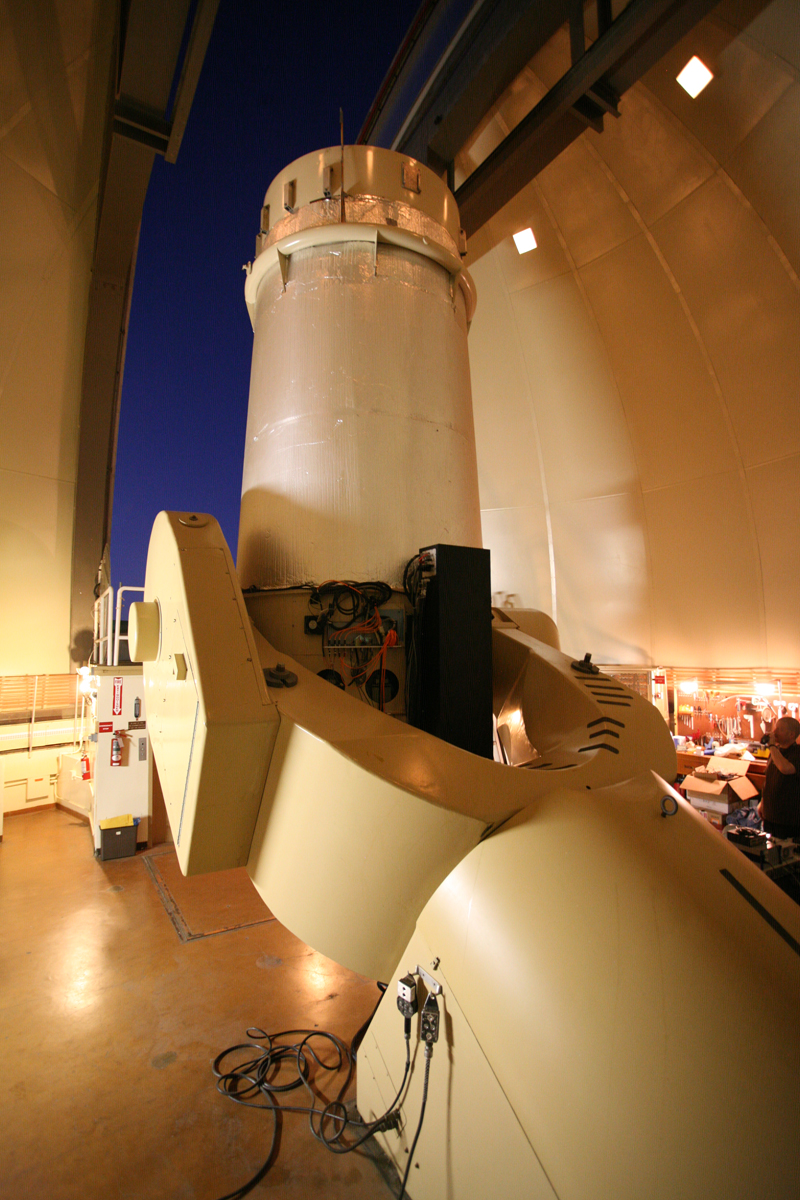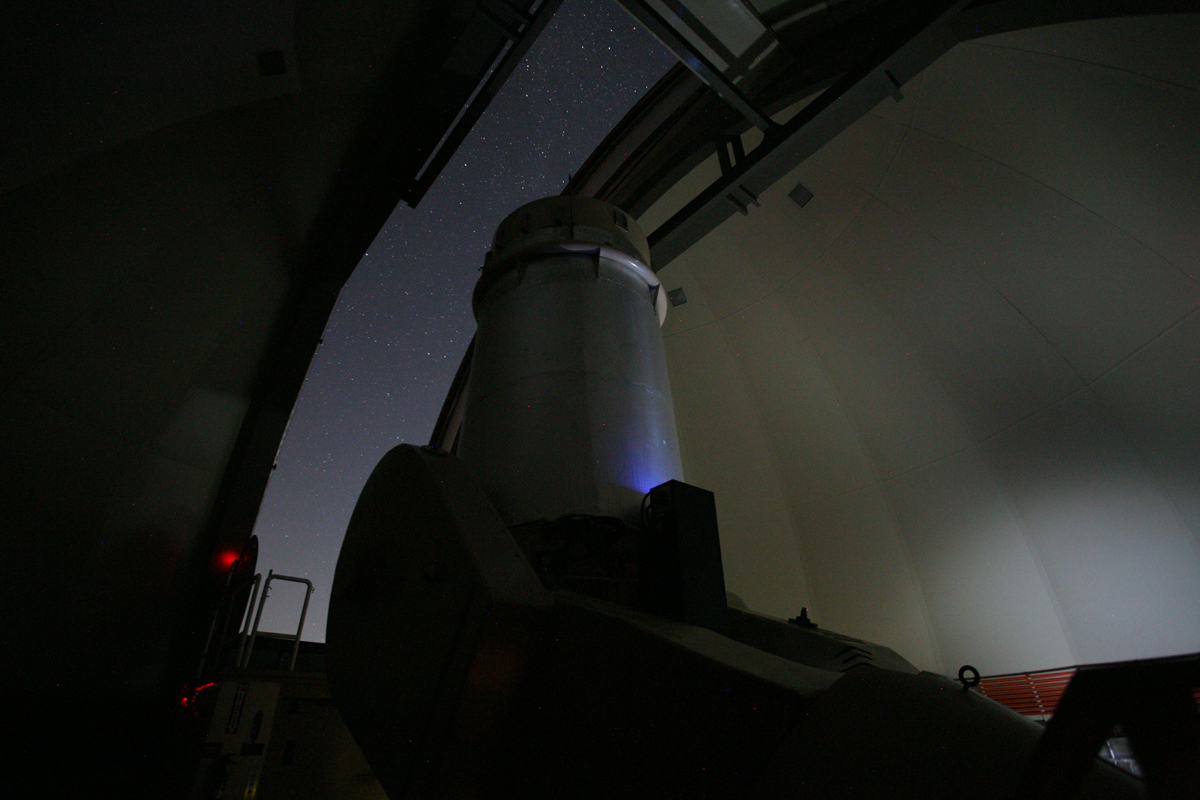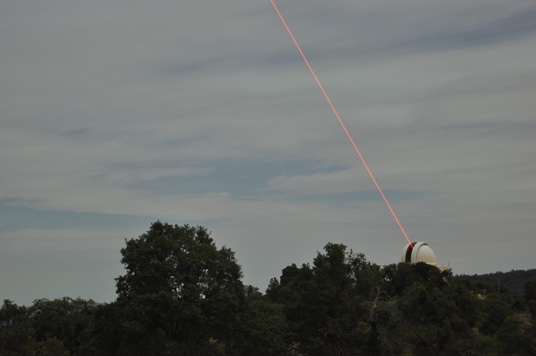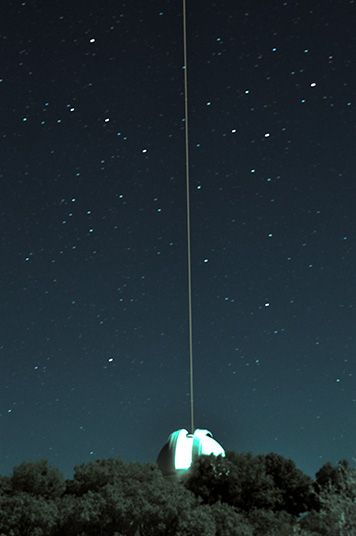Adaptive optics is a technique that allows ground-based telescopes to remove the blurring affects caused by Earth's atmosphere. The adaptive optics system uses a star as a calibration source and then deforms a small mirror to correct for distortions caused by the atmosphere. The corrections are made faster than the atmosphere can change -- often thousands of times per second.
By projecting a laser into the sky astronomers can expand this technique to cover a larger fraction of the sky.
Here is the 60-inch telescope last Sunday night just after the dome was opened.
 The 12-Watt laser is in the black box mounted on the south side of the telescope (between the arms of the mount).
The 12-Watt laser is in the black box mounted on the south side of the telescope (between the arms of the mount).Here is the view with the lights turned off and the laser turned on:
 Notice that you can't see the laser (but you can see where it is making a part of the telescope's insulation fluoresce!). Being invisible is one of the chief advantages for the laser.
Notice that you can't see the laser (but you can see where it is making a part of the telescope's insulation fluoresce!). Being invisible is one of the chief advantages for the laser.The light that the laser emits is invisible ultraviolet light. Because you can't see the laser light this system requires no human spotters to be staged outside looking for air planes. All laser-guide star systems (like the one that has been used on the 200-inch Hale Telescope) that make use of visible light are required by the FAA to have spotters. Even hand-held laser pointers can be a danger to aircraft.
The Robo-AO system does not require spotters, which is perfect because the telescope normally operates in robotic mode without any people being present.
As the UV laser shines up toward its astronomical target astronomers make use of something known as Rayleigh scattering. The UV light scatters off of molecules in the air, giving a return signal that tells the deformable mirror in the adaptive optics system how to correct for atmospheric turbulence.
The Robo-AO system will be the first robotic laser-guide star adaptive optics system, delivering high-angular-resolution observing in the visible for up to hundreds of targets per night. This will enable the exploration of science parameter spaces inaccessible to large diameter telescope adaptive optics systems. A fully-working testbed has been operating at Caltech in the Cahill Center for Astronomy and Astrophysics basement for several months, and the system is expected to start its science demonstration period in early 2011 at Palomar Observatory's 60-inch telescope.
 From there the Robo-AO system will be available as a relatively affordable and portable option for to 1-3 meter class telescopes around the world.
From there the Robo-AO system will be available as a relatively affordable and portable option for to 1-3 meter class telescopes around the world.The Robo-AO project is a collaboration between Caltech Optical Observatories and the Inter-University Centre for Astronomy and Astrophysics and is partially funded by the National Science Foundation.




2 comments:
Thanks for the details about the 60"...so it begs the obvious question. Will the 200" convert to this type laser in the future?
I am pretty sure that is a possibility that is being considered.
Post a Comment